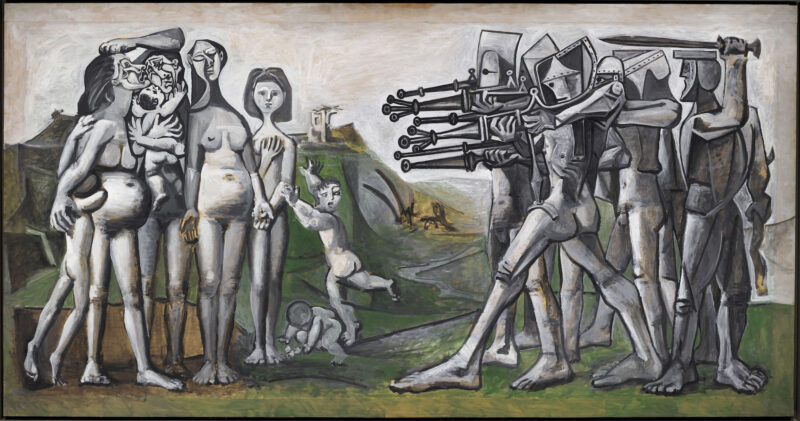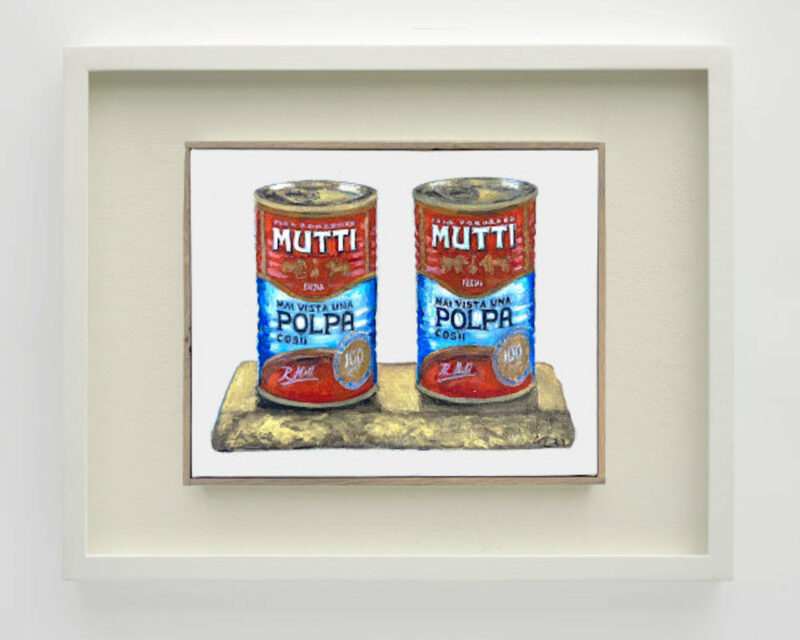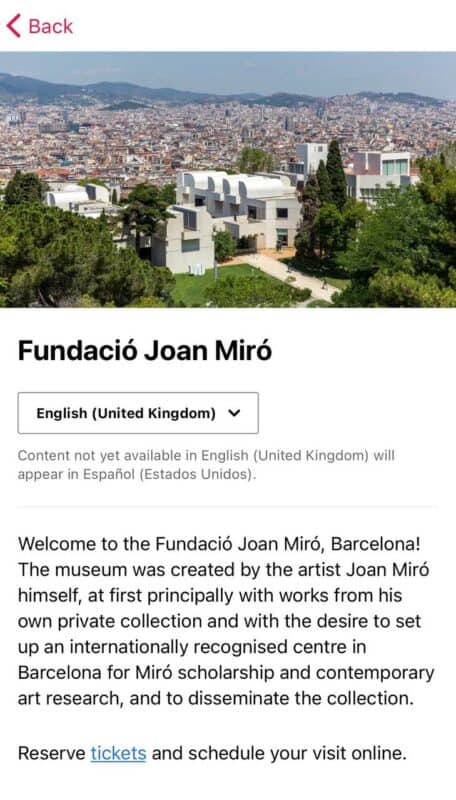“[…] I have always believed and still believe that artists who live and work with spiritual values cannot and should not remain indifferent to a conflict in which the highest values of humanity and civilisation are at stake.”
Pablo Picasso, The New York Times, 1937
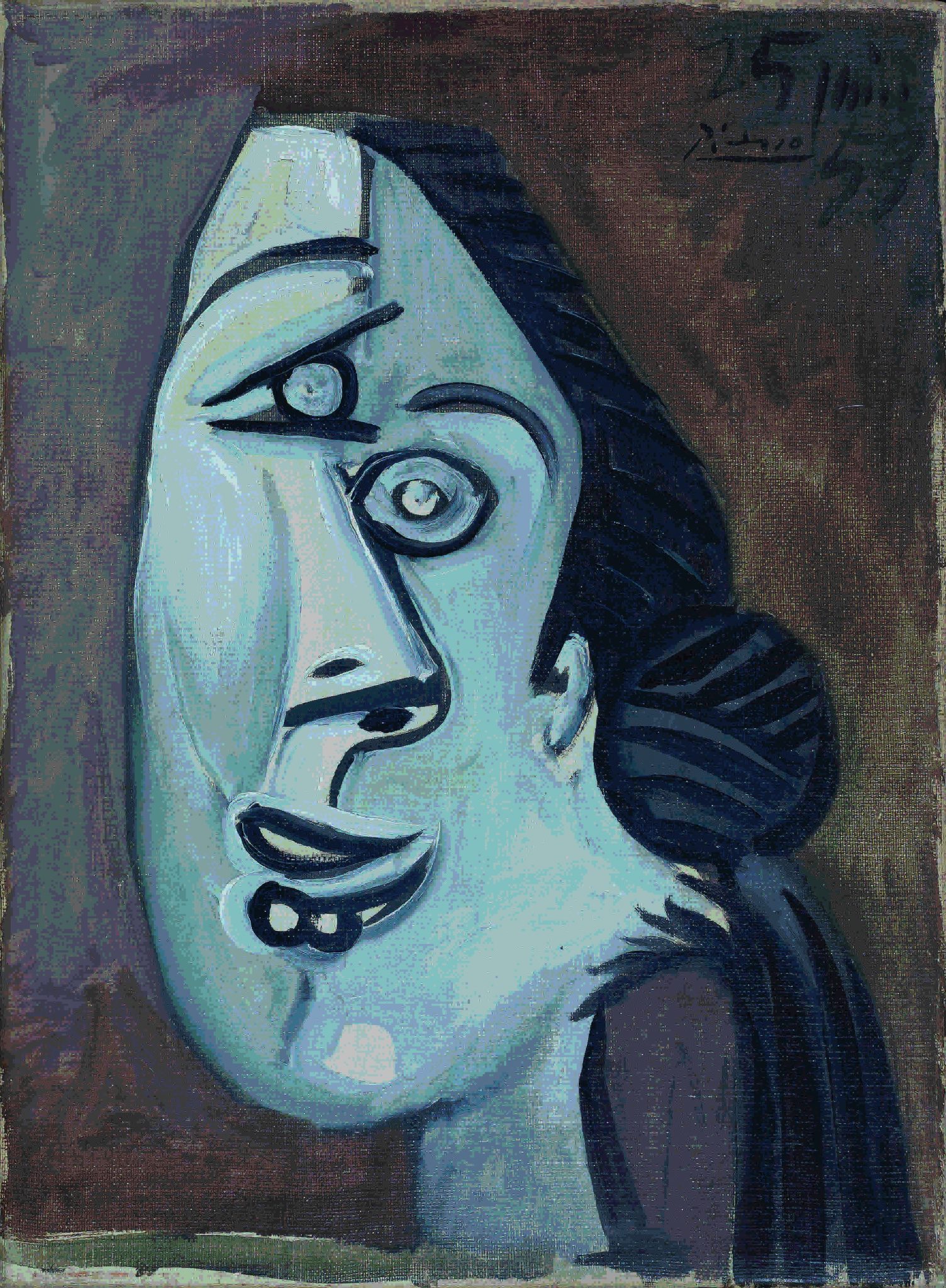
Pablo Picasso, Head of Women, 1953, Oil on canvas, 33 x 24 cm
Art Revolutionaries is an exhibition inspired by the Spanish Pavilion at the 1937 Paris Exposition Internationale des Arts et Techniques dans la Vie Moderne, commemorating 80 years since its inauguration. The original Pavilion marked a crucial moment during the Spanish Civil War (17th July – 1st April 1939) with the Spanish Republic demonstrating the atrocities that where taking place in Spain.

Alexander Calder, Crag with Yellow Boomerang and Red Eggplant, 1974, Láminas de metal pintado y alambre, 198.1 x 238.7 x 104.1cm, Pictures courtesy of Mayoral
Similarly to the original pavilion, this exhibition features paintings and sculptures by modernist masters including Pablo Picasso, Joan Miró, Alexander Calder and Julio González. This exhibition in London also brings together important archival material, such as rare propaganda posters from the original pavilion and a replica of Miró’s infamous work El Segador (The Reaper) which disappeared when the pavilion was dismantled in 1937. Mayoral’s tribute to the Pavilion is curated by Juan Manuel Bonet, Director of the Instituto Cervantes in Paris, and former Director of Museo Nacional Centro de Arte Reina Sofía in Madrid. The exhibition is produced in collaboration with Joan Punyet Miró, historian and grandson of Joan Miró and specialists on the subject, Fernando Martin and Josefina Alix. Amongst the works featured will be Picasso’s Head of a Woman, Calder’s sculpture Crag with Yellow Boomerang and Red Eggplant and Miró’s Metamorphose.
The Spanish government sought to use the Pavilion as a means of political propaganda, to reveal the cruelty of Franco’s regime. Participation in the Paris Exposition became an occasion to reflect on the conflict, with the Spanish Government commissioning some of the key artists and designers in the country at that time. The commission stimulated the artists to create some of the most significant artworks of their careers: Picasso’s Guernica, Calder’s The Mercury Fountain, González’s Montserrat and Miró’s El Segador (The Reaper).
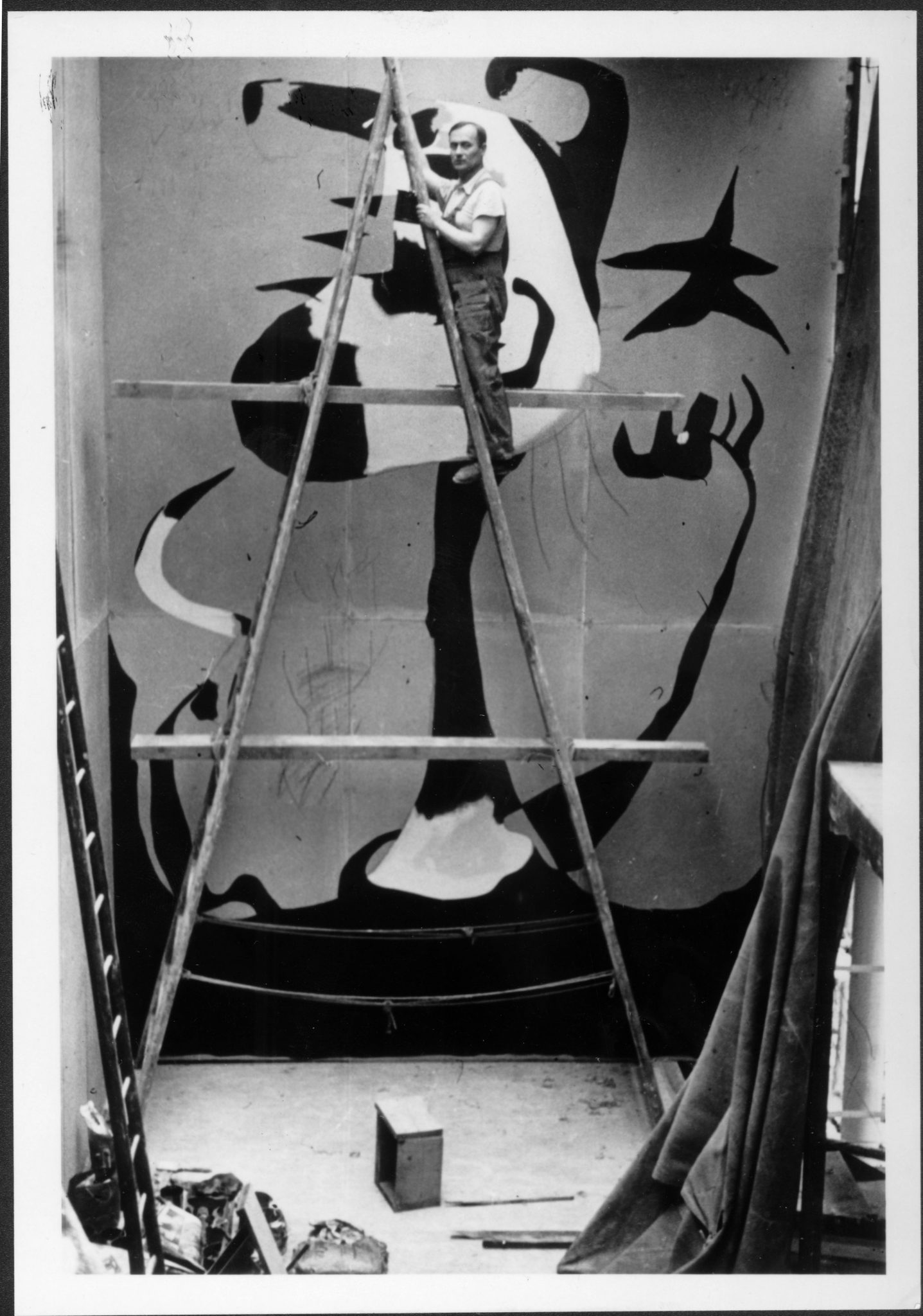
Joan Miró painting El Segador (The Reaper), 1937. © Successió Miró, 2016. Successió Miró Archives.
As Joan Punyet Miró, Miró’s grandson, explains:
“El Segador reflected the pain, suffering and revolutionary angst of the Catalan people on seeing how their identity, their language and their culture risked being engulfed by a nationalist victory. It is important to note that this mural was produced specifically for the Republican Pavilion, as was Picasso’s Guernica.”
The original pavilion was designed by renowned Spanish architects Josep Lluís Sert and Luis Lacasa to assert the validity of the Spanish Republic and openly denounce Franco’s Nationalist regime. The modernist Pavilion stood in bold contrast to the monumental pavilions of the Soviet Union and Germany. Both architects also played a pivotal role in inviting Picasso and Miró to take part in the commission for the Spanish Pavilion. The original pavilion has since been dismantled and a replica was built in 1992 at The Pavelló de la República CRAI Library in Barcelona by the architects Antonio Ubach, Juan Miguel Hernandez and Miguel Espinet Leon.
Art Revolutionaries pays tribute to the Pavilion by including imitations of the Pavilion façade as well as replica furniture and an abundance of historical and archival material including press coverage and footage of the Pavilion. Amongst the archival material will be documentation of ways in which British artists such as Henry Moore and Felicia Browne showed support for the Spanish Republicans during the Spanish Civil War, and of the tour of Picasso’s Guernica around the UK in 1938, first shown at New Burlington Galleries, London.
Jordi Mayoral, Director of Mayoral explains the motives behind bringing this show to London
“The works produced by the artists involved at the time of the Spanish Civil War represent a significant turning point in the country’s struggle between democracy and fascism. As we commemorate the 80th anniversary of this historical episode in Paris in 1937, we pay homage to these artists before a London audience”.
Art Revolutionaries Mayoral at 6 Duke Street, St James’s, London SW1Y 6BN
18th January – 10th February 2017 Private View: 17th January 2016, 6-9pm
www.galeriamayoral.com

